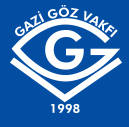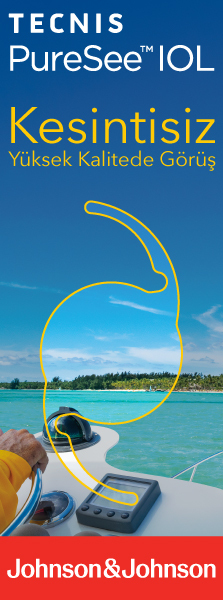Retina-Vitreous
2009 , Vol 17 , Num 3
Vitreoretinal Surgical Outcomes For Posterior Segment Intraocular Foreign Bodies
1Sağlık Bakanlığı Ankara Ulucanlar Göz Eğitim ve Araştırma Hast., Ankara, Uzm. Dr.2Sağlık Bakanlığı Ankara Ulucanlar Göz Eğitim ve Araştırma Hast., Ankara, Doç. Dr.
3Hacettepe Üniversitesi Tıp Fakültesi , Biyoistatistik A.D., Ankara, Asist. Dr. Purpose: To assess the outcomes of the surgical management of posterior segment intraocular foreign bodies (IOFBs) and ocular injuries associated with IOFBs.
Materials and Methods: This study included 81 eyes of 78 patients undergoing vitreoretinal surgery and posterior segment foreign body extraction. Of the patients 76 were male and 2 female, and the mean age was 29.4±10.3 years. All eyes had posterior segment IOFBs. In addition, the patients with posterior segment IOFBs had preoperative ophthalmic findings, including cataract formation (46 eyes, 56.7%), vitreous hemorrhage (VH) (47 eyes, 58.0%), and retinal detachment (RD) (8 eyes, 9.8%). Pars plana vitrectomy and IOFB removal were carried out in 33 eyes, and additional different surgical procedures were performed in 48 eyes. The surgical success rate was assessed at the last examination. Furthermore, the comparison of visual acuity, and the presence of preoperative VH and RD were statistically evaluated. Paired samples-t test and chi-square test were used for the statistical analyses and p<.001 was considered to be statistically significant.
Results: The mean follow-up time was 12.2±2.8 months. At the last follow-up, there was hypotony and phthisis bulbi in 3 eyes, total fibrotic RD and proliferative vitreoretinopathy (stage D3) in 5 eyes, and macular pucker in 3 eyes. Moreover, 47.8% of the eyes with VH and 92.3% of the eyes without VH had statistically significant increased visual acuity (p=0.001). The visual acuity increased in 48.7% of the eyes with RD and 68.6% of the eyes without RD but it was statistically insignificant (p=0.245). In addition, there was a significant increase in visual acuity in 42.5% of the eyes with silicone oil and 40% of the eyes with C3F8 (p=0.0001). The anatomic success rate was 86.4%. The overall visual success rate was 79%, with a statistically significant difference from the baseline (p=0.0001).
Conclusion: Acceptable visual and anatomical results can be achieved after the removal of IOFBs, appropriate surgical interventions, and the use of internal tamponade agents in eyes with ocular injuries associated with IOFBs. Keywords : Intraocular foreign body, posterior segment, vitreoretinal surgery





